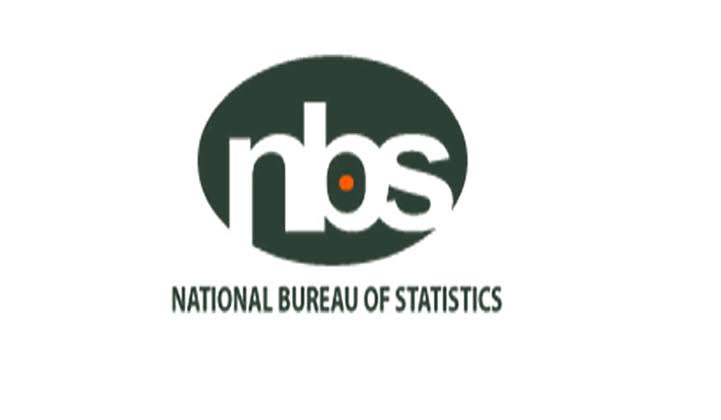Nigeria’s economy expanded by 3.84% in real terms during the fourth quarter of 2024, an increase from 3.46% recorded in the same period of 2023. This growth also marks a slight improvement from the previous quarter, which maintained the same 3.46% growth rate.
According to the latest data released by the National Bureau of Statistics, the growth was largely driven by the services sector, which saw a 5.37% increase and accounted for 57.38% of the country’s total GDP.
The report noted, “Nigeria’s GDP grew by 3.84% (year-on-year) in real terms in Q4 2024. This growth rate surpasses the 3.46% recorded in Q4 2023 and the 3.46% growth in Q3 2024. The expansion was primarily driven by the services sector, which grew by 5.37% and contributed 57.38% to total GDP.”
The GDP data does not reflect the newly rebased methodology.
Despite the overall economic growth, the agriculture sector expanded by 1.76%, slower than the 2.10% growth in Q4 2023. The industrial sector also saw a decline, growing by just 2.00%, down from 3.86% in the previous year.
In nominal terms, Nigeria’s GDP for Q4 2024 was N78.37 trillion, marking an 18.91% increase from N65.91 trillion recorded in Q4 2023.
For the full year 2024, the economy grew by 3.40%, up from 2.74% in 2023, mainly driven by the non-oil sector. The oil sector’s contribution to GDP dropped slightly to 4.60% in Q4 2024, compared to 4.70% in the same period of 2023 and 5.57% in Q3 2024. Nigeria’s daily crude oil production averaged 1.54 million barrels per day, slightly lower than 1.56mbpd in Q4 2023 but an improvement from 1.47mbpd in Q3 2024.
Although the oil sector’s growth rate of 1.48% was significantly lower than the 12.11% growth in Q4 2023 and 5.17% in Q3 2024, it showed a positive annual growth of 5.54%, reversing the -2.22% contraction recorded in 2023.
The non-oil sector, which remains the major driver of growth, grew by 3.96% in Q4 2024, outpacing the 3.07% recorded in Q4 2023 and 3.37% in the previous quarter. It accounted for 95.40% of GDP, a slight increase from 95.30% in Q4 2023.
Key contributors to the non-oil sector’s growth include financial and insurance services, telecommunications, agriculture (particularly crop production), trade, transportation and storage (especially road transport), and manufacturing.
The mining and quarrying sector, which includes crude petroleum, natural gas, and solid minerals, grew by 2.23%, a sharp decline from the 8.04% growth recorded in Q4 2023. Its contribution to GDP stood at 4.84%, slightly down from 4.91% in the same period the previous year.
The agriculture sector saw a slowdown, with a growth of 1.76%, compared to 2.10% in Q4 2023. Crop production remained dominant, contributing 90.70% to the sector’s GDP share.
The manufacturing sector grew by 1.79%, up from 1.38% in the previous quarter, though its GDP share fell to 8.07% from 8.23% in Q4 2023. The construction sector grew by 2.95%, slightly lower than the 3.70% recorded in Q4 2023, contributing 3.44% to GDP, down from 3.47%.
Trade grew by 1.19%, slightly lower than 1.40% in Q4 2023, but better than the 0.65% growth seen in Q3 2024. It accounted for 15.11% of total GDP in the quarter.
The financial and insurance services sector performed exceptionally well, growing by 27.78%, though slightly lower than the 29.77% growth in the previous quarter. It increased its contribution to GDP to 6.10%, up from 4.95% in Q4 2023.
Telecommunications continued its strong performance, with a 5.90% growth, though slightly below the 6.32% growth in Q4 2023. The sector’s GDP contribution rose to 17.00%, up from 16.66%.
The transportation and storage sector saw a significant recovery, growing by 18.61%, a stark contrast to the -29.00% contraction in Q4 2023. It contributed 1.26% to GDP. On the other hand, the electricity, gas, steam, and air conditioning supply sector contracted by 5.04%, a sharp decline from 6.17% growth in Q4 2023, contributing 0.49% to GDP.

